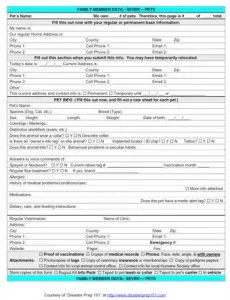May is a month of renewal in nature–but the season also brings destruction, with tornadoes, flooding and other severe weather events reminding us of the fragility of our surroundings and our security in it. Helping pet parents devise a plan to protect four-legged family members in times of crisis, FEMA has declared the second Sunday in May every year as National Animal Disaster Preparedness Day.
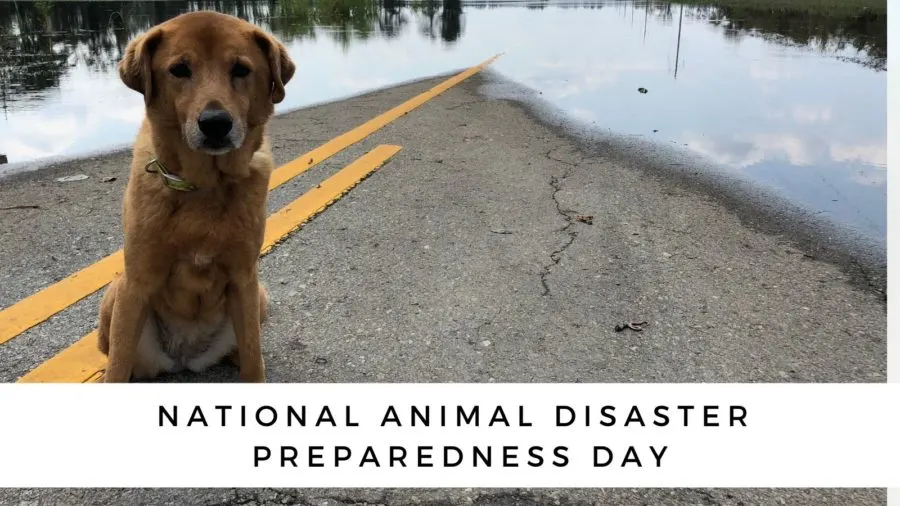
Creating a Pet Emergency Kit
To defend your dog or cat against a natural disaster, FEMA advises for National Animal Disaster Preparedness Day creating an evacuation plan and a Pet Emergency Go-Kit complete with:
- First aid items
- A three-day supply of water and food
- Pet care supplies, such as food and water bowls, waste bags and a leash and collar
- Any required medication and a copy of your pet’s veterinary records
- Important contact information
- Comfort items to calm the frayed nerves of your dog or cat companion, like their favorite toy or a blanket
Organizing Your Dog’s Information on One Form
No one likes to think about natural disasters but there’s no denying that they can sneak up at any time.
One Labor Day, the worst wildfires in Texas history struck not that far from us; we could smell the smoke for weeks.
Along with the destruction of over 1,600 homes and one of the prettiest parts of the state, one of the saddest parts of the disaster was its impact on pets.
The fires struck on a Sunday afternoon when many families weren’t home…and weren’t allowed to go return to retrieve their pets. Some lucky pets were saved by neighbors as they themselves evacuated; others were rescued by animal welfare groups in the coming days. Sadly, many animals perished.
If someone had to evacuate your pets for you, would they know where to start? Would they know how many animals you have, their names, your veterinarian’s office?
With just a few minutes of preparation, you can gather all that information together thanks to a free form from http://www.disasterprep101.com.
To download the form, just click here or on the image above to download a printable PDF where you can record information on each of your pets. Keep a copy for yourself, leave a copy with your neighbors, and put a copy away for safekeeping, such as in a safety deposit box. We’d also recommend adding your dog’s microchip number to this form so you’ll have that handy in case he is lost.
Hopefully, you’ll never need it but, in the event of a disaster, you’ll have the peace of mind of knowing that you took the time to get your pets’ information gathered in one location.
Tips for Keeping Your Pet Safe in a Natural Disaster
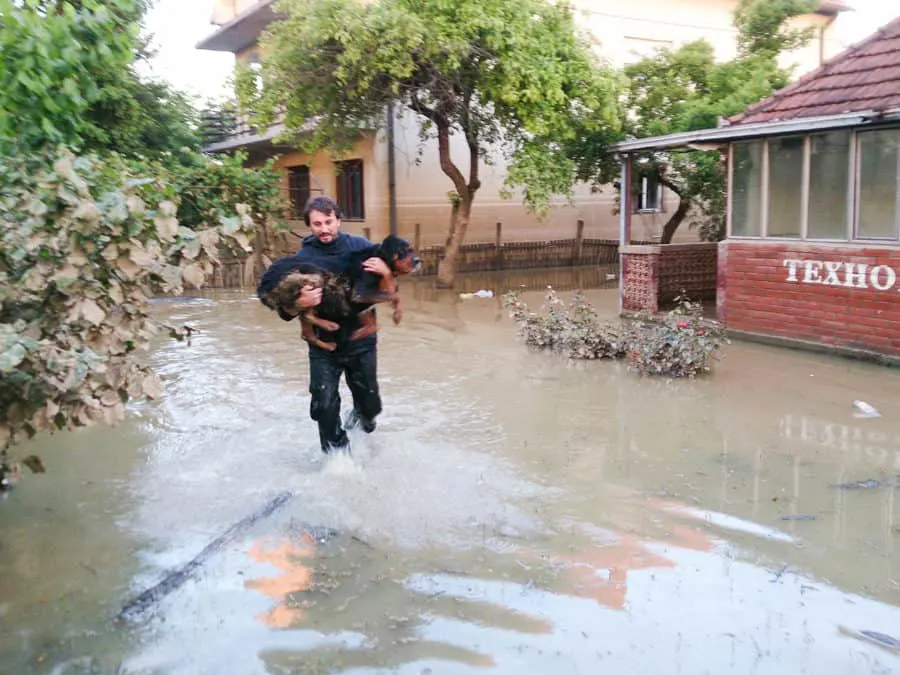
No matter where you live, natural disasters are a possibility. National Animal Disaster Preparedness Day brings awareness to all kinds of natural disasters: floods, tornadoes, wildfires, hurricanes and earthquakes. Sometimes evacuations–such as for hurricanes–are possibilities; with other disasters like earthquakes, there are no warnings.
Other recommended steps to keep your pet safe in the event of a natural disaster include:
- Get your dog and/or cat microchipped and make sure they wear a collar ID tag.
- Remember to keep all contact information on the ID tag up to date.
- Alert first responders to the fact that there are pets in your home by displaying a pet rescue decal where it can be easily spotted, such as on the front door or window. Include your veterinarian’s contact information on the decal.
- Where do your pals with paws hide when they are frightened? Finding the spot where they feel safe when scared will help you locate your pet quickly if an emergency arises and you need to quickly evacuate.
- As some disaster shelters may not accept pets, designate a place to keep your dog or cat in case of evacuation. If relatives or friends cannot accommodate your pet, look for hotels and motels with pet-friendly policies.
- Keep a photo of your four-legged friend with you at all times in case you are separated during a natural disaster.
- Have a pet carrier or crate for transport and safe-keeping on hand.
More Tips from Rescuers in Animal Disasters
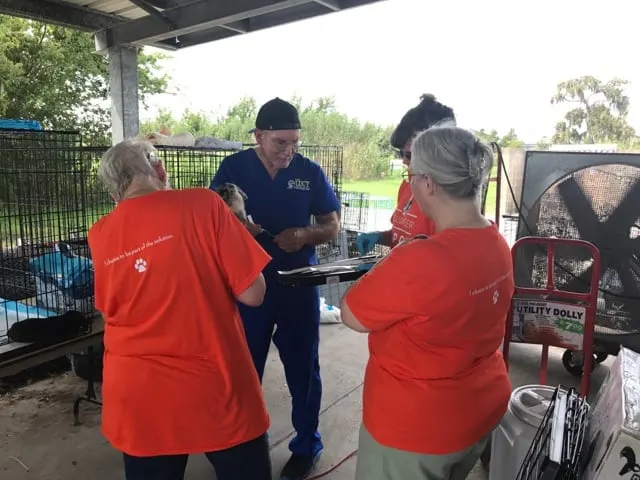
Following Hurricane Harvey here in Texas, Lucy Pet Products and Lucy Pet Foundation worked to help the lost, injured, and homeless animals of Brazoria County–so they saw firsthand the devastation that hurricanes will bring and they sent us some helpful tips as well:
- ID Tags and Collars are a must have. Make sure your pet’s identification is up to date and on your pet. If you are unable to have engraved ID tags made, any waterproof identification around their collar using tape to create a makeshift tag is better than no tag at all.
- Have a travel bag, crate or pet carrier and/or leashes for each pet.
- Recent photos of your pet in case you get separated.
- Water, Food and Any Medications – Two weeks worth and include their feeding dishes.
- Find out if hotels and evacuation shelters are pet-friendly and if they require medical records.
- Boarding facilities and veterinary offices may also be able to provide emergency housing.
- Litter and paper towels or bags for any clean up.
- Let your family and friends know where you and your pets will be.
- Never leave your pets behind. Make plans, arrangements, do whatever you can because you don’t know how long you could be gone.
Tips from a Professional Organizer

We all dream of organizing our closets and homes with a professional organizer–but what about our “go bag” for our pets in the case of a natural disaster. We have tips from Bonnie Joy Dewkett, a professional organizer. Her company, The Joyful Organizer®, creates and implements organizational systems for the home and office. Just what does she recommend? Here are her tips:
Make sure you have a sticker in the window letting emergency personnel know how many pets you have and if they are cats, dogs, etc. This will help emergency workers know how many they need to get out of the house in case of evacuation. If you are evacuated, try to leave a note over the sticker saying you took your pets with you.
Make sure you have a crate or pet friendly container handy to transport your pets to a shelter. Even the shelters that accept pets do require animals to be crated.
Call shelters AHEAD of an emergency. When a storm is approaching it is too late to spend the time finding some place to go. Learn where the usual shelters are set up near your home and which ones accept pets. Even some Red Cross shelters do not accept pets. So know where you can go so you can get there quickly and safely.
It is also a good idea to talk to friends and family in your area. If you need to leave quickly for an emergency, would they be able to assist with your pet?
Just like humans, pets need an emergency supply kit as well. According to the ASPCA here are some items you should keep inside:
- Pet first-aid kit and guide book (ask your vet what to include, or visit the ASPCA Store to buy one online)
- 3-7 days’ worth of canned (pop-top) or dry food (be sure to rotate every two months)
- Disposable litter trays (aluminum roasting pans are perfect)
- Litter or paper toweling
- Liquid dish soap and disinfectant
- Disposable garbage bags for clean-up
- Pet feeding dishes
- Extra collar or harness as well as an extra leash
- Photocopies of medical records and a waterproof container with a two-week supply of any medicine your pet requires (Remember, food and medications need to be rotated out of your emergency kit—otherwise they may go bad or become useless.)
- Bottled water, at least 7 days’ worth for each person and pet (store in a cool, dry place and replace every two months)
- A traveling bag, crate or sturdy carrier, ideally one for each pet
- Flashlight
- Blanket (for scooping up a fearful pet)
- Recent photos of your pets (in case you are separated and need to make “Lost” posters)
- Especially for cats: Pillowcase or EvackSack, toys, scoopable litter
- Especially for dogs: Extra leash, toys and chew toys, a week’s worth of cage liner
It is also important to have a photo of you with your pet. If you pet is taken to a rescue facility without you, at some point you need to go and prove ownership to be able to pick up your pet. A photo is a great way to do this. A microchip is even better.
Sometimes you need to take shelter within your home. Make sure you pick out and identify areas in your home where your pet can be safe with out if you have seek shelter within your home.
In order to make sure you pet receives the best and quickest care, it is important to preregister your pet with local vet. facilities. Many allow you to give them your pet’s history, emergency numbers, medications, etc so that if your pet needs to be treated quickly, all necessary information is already on hand.
Pet emergencies can be expensive. It is important to have a saving fund set up. If you don’t have a separate fund, open a separate credit card that will only be used for pet emergencies. The difference between being prepared and not could be catastrophic.
Pin It to Remember National Animal Disaster Preparedness Day
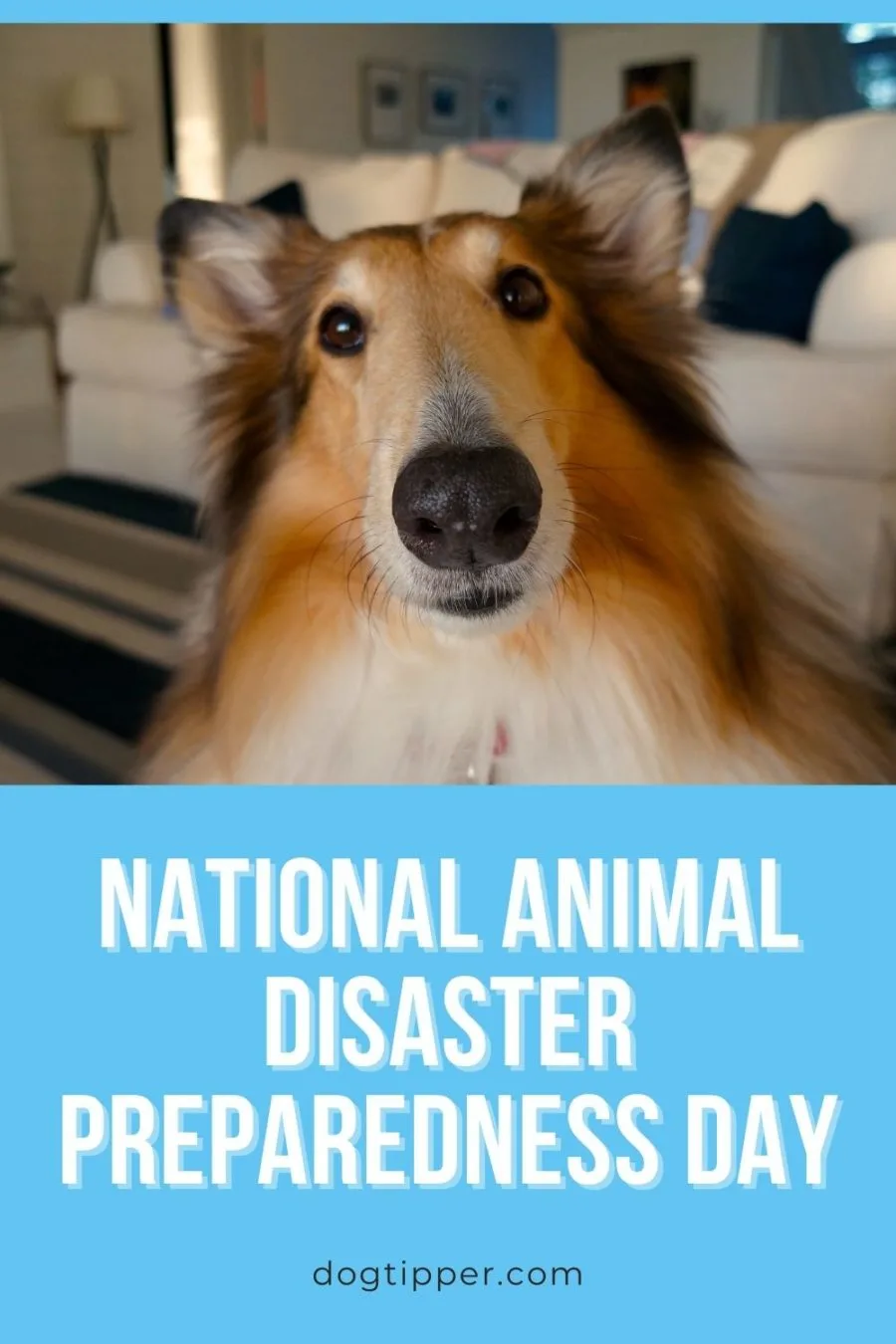
- Arthur The King Movie Showcases Rescue of Stray Dog - March 12, 2024
- 2024 Bark in the Park Major League Baseball Games - March 11, 2024
- Meghan Markle Celebrates Shelter Expansion - February 22, 2024

